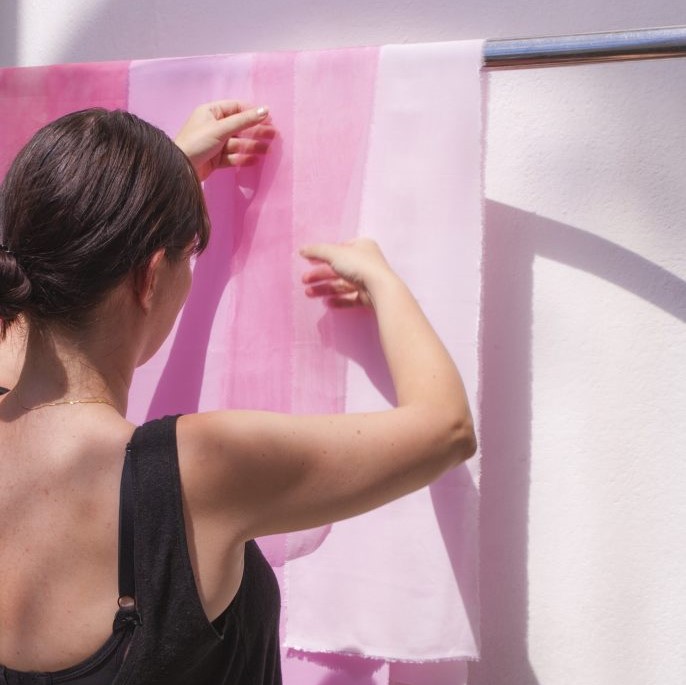Meet the designer duo from Rotterdam whom we have known and admired for years! Laura and Ilfa are specialized in bio-dyeing with bacteria. In 2021 we finally got the opportunity to start working together on an exciting project. More details on this will follow, but let us start first with introducing you to the fascinating design world of these two inspiring women.
How did you get hooked on working with bacteria? Tell us a bit about your background.
Ilfa: The starting point, at the beginning of my Fashion Design & Sustainability study at Willem de Kooning University of Applied Sciences, was the disaster at Rana Plaza in Bangladesh. When this happened everyone was talking about it and a lot of information was released. I then dived deeper into the fashion system. Also during my study, there was always a focus on research, but I am a designer who starts from the material. I was looking for less polluting alternatives. I was already working with natural colours and mycelium and I was searching for a dye for mycelium. In my search, I ended up with bacteria. It was uncharted territory, certainly within traditional fashion design, and therefore very interesting to explore further. It felt like a logical step in my material research and was hugely liberating for me as a designer.
Laura: I was working as an in-house fashion designer at the time. This is where I first came into contact with the dark sides of the fashion industry. The condescending way some buyers would communicate with suppliers, always squeezing out a couple of cents more discount. The copying of other brands. But also the chemicals that were used in dyeing and printing. I remember one time a part of the collection had to be destroyed before it would hit the stores because it failed EU toxicity tests, caused by dye chemicals. While it had passed the tests in China. I then realised I was part of a broken system and wanted to take responsibility and contribute in a more positive and constructive way. I started my own studio Kukka and I learned about bacterial pigments at Textile Academy by Waag Society in Amsterdam, where I met Ilfa.
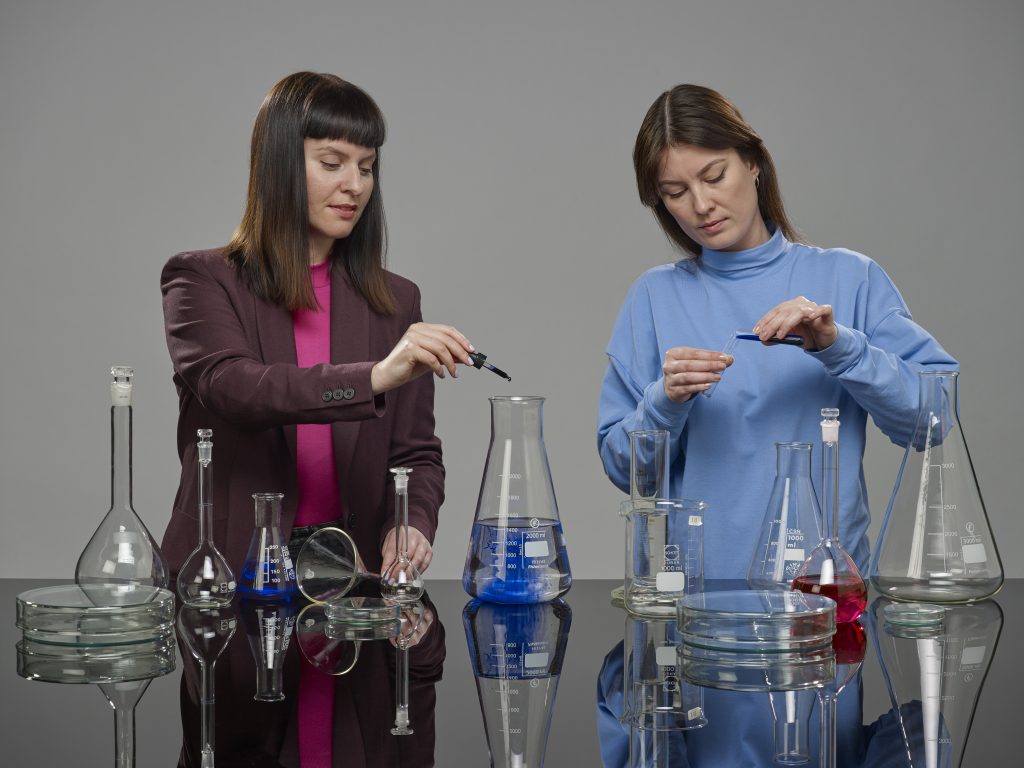
Ilfa: During my minor, I started the course at Waag Society to be able to connect with more like-minded people that are interested in exploring new materials, bio-hacking and new design approaches. Sometimes I really felt like an alien with my ‘Bacteria Growing Stations’ concept, with mycelium fur and bacteria patterns growing on top of it. I am glad, times have changed too and universities are more open for future design strategies. Laura was one of the attendants of the course as well. She started from a vision where she wanted to gain more in-depth knowledge about sustainable options for the fashion industry. We both had in common that we are fascinated by colours! We had an instant connection, so we started collaborating. We learned basic lab skills at the Waag Society’s Open Wet Lab. We decided to collaborate on the course’s final project in which we continued our experiments in the biomedical lab at the Rotterdam University of Applied Sciences (UAS). This was the start of the Living Colour project. Through the years we have worked with many scientists and students from multiple institutes. They help us provide the scientific evidence for our experiments.
When you look back at your beginnings, how did your project evolve through time?
Our research emerged out of love for textiles. We began with autonomous experiments that we continue to develop to this day. By dyeing textiles with pigmented bacteria we are looking for a sustainable alternative to petroleum based textile dyes as well as to create a new natural aesthetic. Our main goal is to advocate for change by creating awareness and motivating both industry and consumers to make well-informed, conscious choices. What started as an experimental collaboration project evolved into many exhibitions, a TEDx talk, publications in renowned magazines, colour trends forecasts like WGSN, and of course our Design to Fade collaboration with PUMA in 2020, which was a real milestone for us. We are also especially proud of the curriculum we have developed together with our collaboration partner Rotterdam UAS, for the bachelor of Biology and Medical Laboratory Research. The students now come into contact with a different way of using microbial pigments during their studies. It is great to see that we can enthuse so many students about this subject and introduce them to other options.
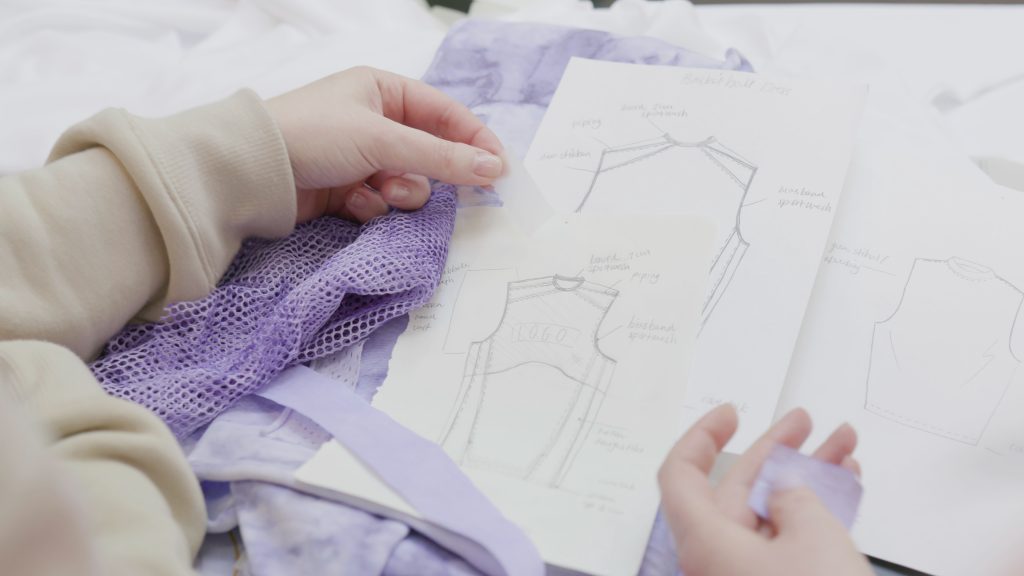
What do you notice has changed in the industry perception related to your project?
Laura: When we started in 2016 we received the most attention from front-runners in the industry, people and press who were already heavily invested in sustainability. Now almost every chemical concern, dye house or brand in the industry is aware of microbial colours.
Ilfa: We have always experienced that most people respond in a positive way to the bacterial colour and they are very curious. People are enthusiastic about it and want to know for example if the bacteria are still on the textile after dyeing. They also ask what kind of nutrients they need. We think that the beautiful and vivid colours are playing a big role, the bacteria dyes are appealing to the eye and don’t look like something to be afraid of.
Laura: As we are working on more sustainable textile dye, the industry is changing too. Many companies have set goals for the UN’s Sustainable Development Goals. But we still see little structural improvement with large-scale impact, there is still a need for (urgent) action. We receive a lot of attention and requests, but most companies and people who approach us are looking for a ready-made solution and are not willing to invest in the development of a new production method, that is considered too risky or takes too long. This is an important reason why we need to join hands to take each other to the next level.
Ilfa: We’d like to see those companies be just as bold as their fashion statements and dare to invest a part of their businesses into innovative projects like these bacterial dyes. If they really want to create an impact for a better fashion and textile industry they need to take the lead by showing that we are creating and investing together instead of investing in greenwashing projects that are not there for the long run.
In your mission statement, you mentioned that as designers you want to bring beauty to the world. How do you define beauty?
Of course, as designers, we want to create something that is aesthetically appealing which is also one of the reasons we are so attracted to the wondrous microbial colours. Beauty is something that includes aesthetics but also includes social aspects and responsibility. Those things should go hand in hand.
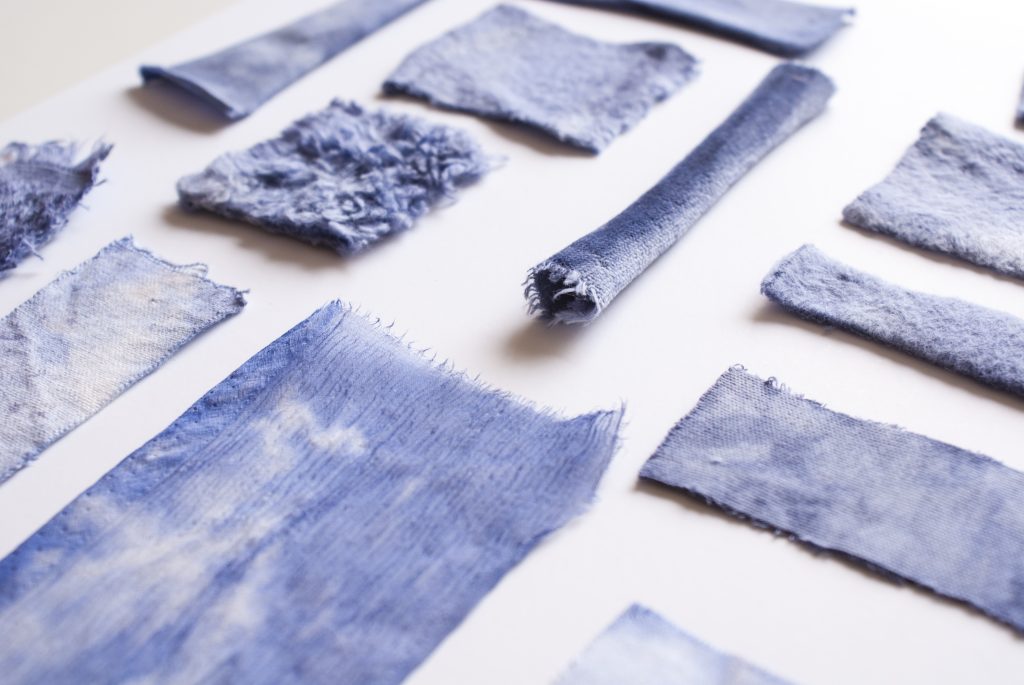
What do you love about working with bacteria? And what has come as a surprise to you?
Ilfa: We are working with a living organism that is not always predictable. Our live dyeing technique always gives surprising and unique results. The organic growth patterns create a beautiful new look and narrative. We appreciate the material agency in working with a living organism, we collaborate with the organism and learn from the organism. We realise we are at the beginning of an era where we can grow our own materials where there’s still so much to discover and explore.
Laura: Since the field of microbiology was new to us, almost everything we encounter comes as a surprise. For instance, how bacteria ‘communicate’ via quorum sensing is truly fascinating. The lab work of our artisanal yet innovative method can become a bit tedious sometimes, just like most textile handicrafts. Meditative, repetitive and tedious.
Ilfa: Working on something that can initiate positive change is very satisfying. We have the opportunity to make a real impact, that is what makes it very special.
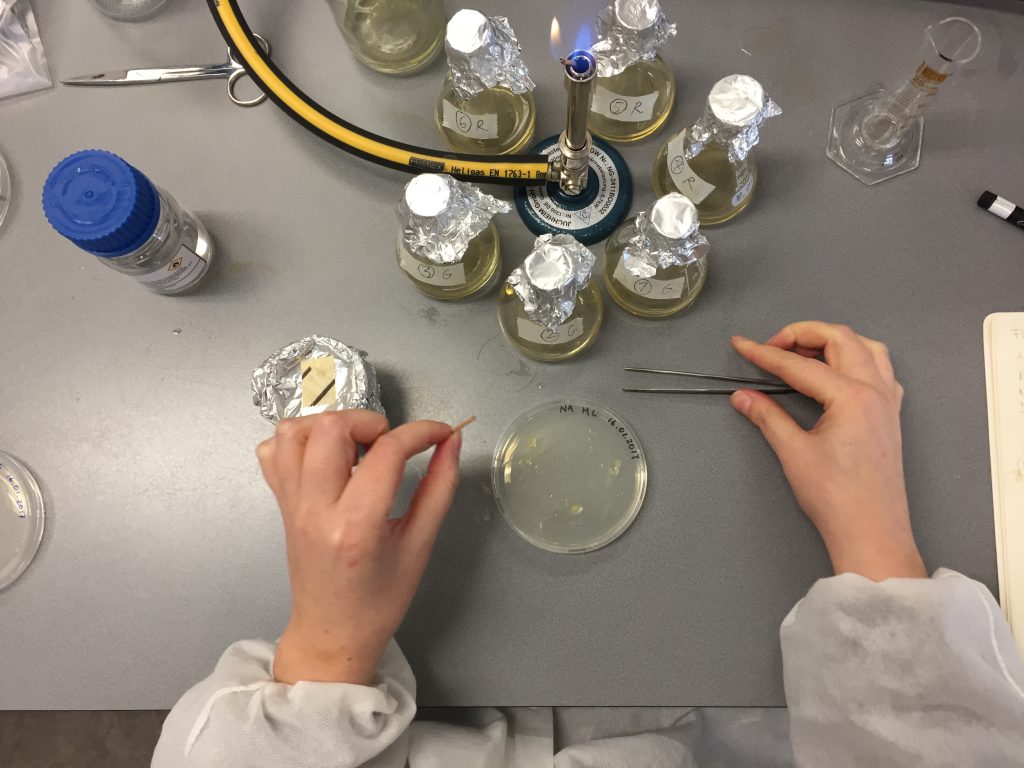
What does colour mean to you?
Laura: In my design practice colour is one of the most important aspects. I love researching colour topics. I recently wrote a chapter about colour for a book. The subject is so versatile and has so many different angles from scientific, to linguistic, to artistic, and there is still much we don’t understand about colour and colour perception. I never get tired of it. Colour is also emotion, looking at the sky in the twilight or a Rothko painting evokes many emotions in me.
Ilfa: Everything around us has its own vibration, colours too. Every colour has its own level of vibration. If you compare a synthetic dye to a natural colour it is not the same. It absorbs and reflects the light differently. I think this is one of the aspects that makes living microbial dyes extra special. Especially in the field of design; it makes your designs come to life, we communicate via colour compositions and colour language. It can even affect our appetite and our mood. Colour is such a strong and powerful way to communicate. Can you imagine a world without colours?
Your activities stretch between design and science. How important is interdisciplinary collaboration for today’s designers?
Designers need to expand their toolkit. We can no longer just design attractive products, we need to be aware of all the steps in the value chain in which our products are made, marketed and used. Since you cannot be aware of everything, it is necessary to work together. Especially in interdisciplinary collaboration, very nice things can emerge. This is because you look at a subject from different perspectives, where everyone’s input is of value.
What is in store for Living Colour working together on a joint project with Vienna Textile Lab?
We are super excited to further develop the expertise we have gathered in recent years, together with Vienna Textile Lab. We both work from the same values, we are serious about social, environmental and economic improvement. We also connect on a more personal level. Along with our networks and willingness to exchange knowledge makes us valuable sparring partners. Our different work fields complement each other. Without revealing too much, expect stunning new textile colour applications.
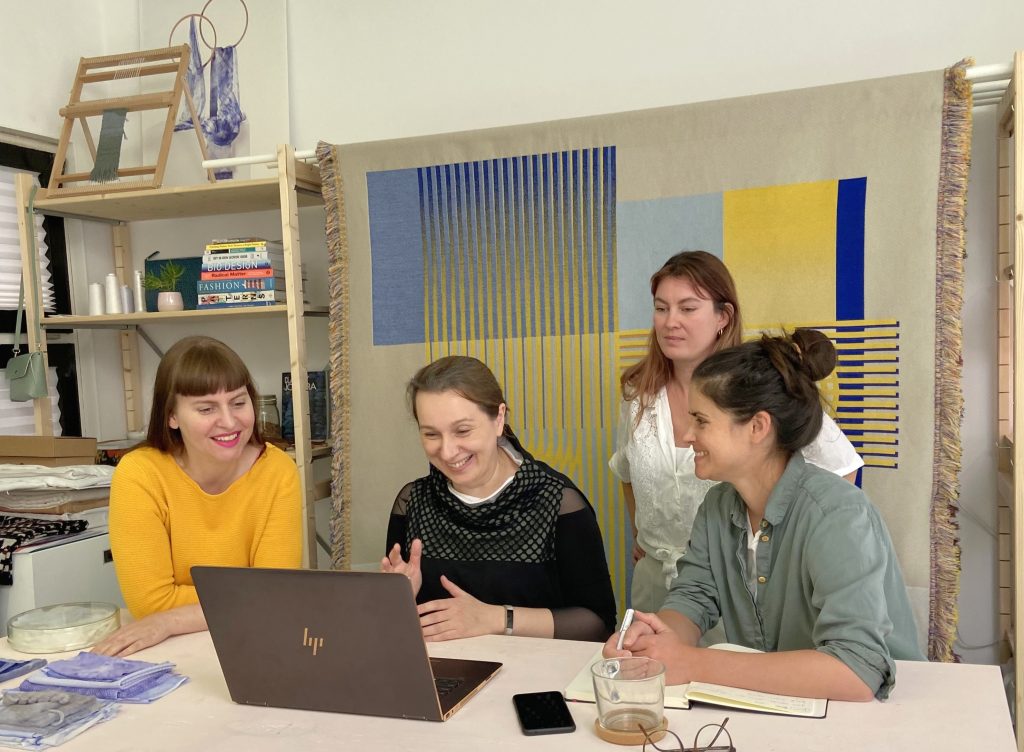
You can find more about Ilfa’s and Laura’s inspiring work on their website livingcolour.eu or on their Instagram profile @livingcolourcollective

